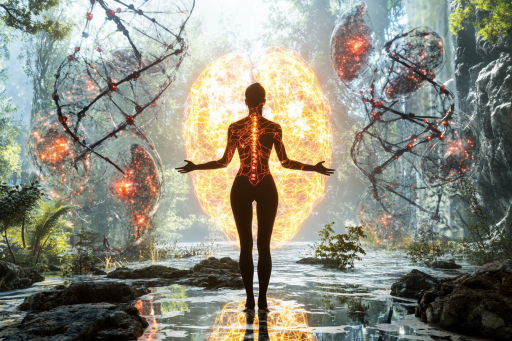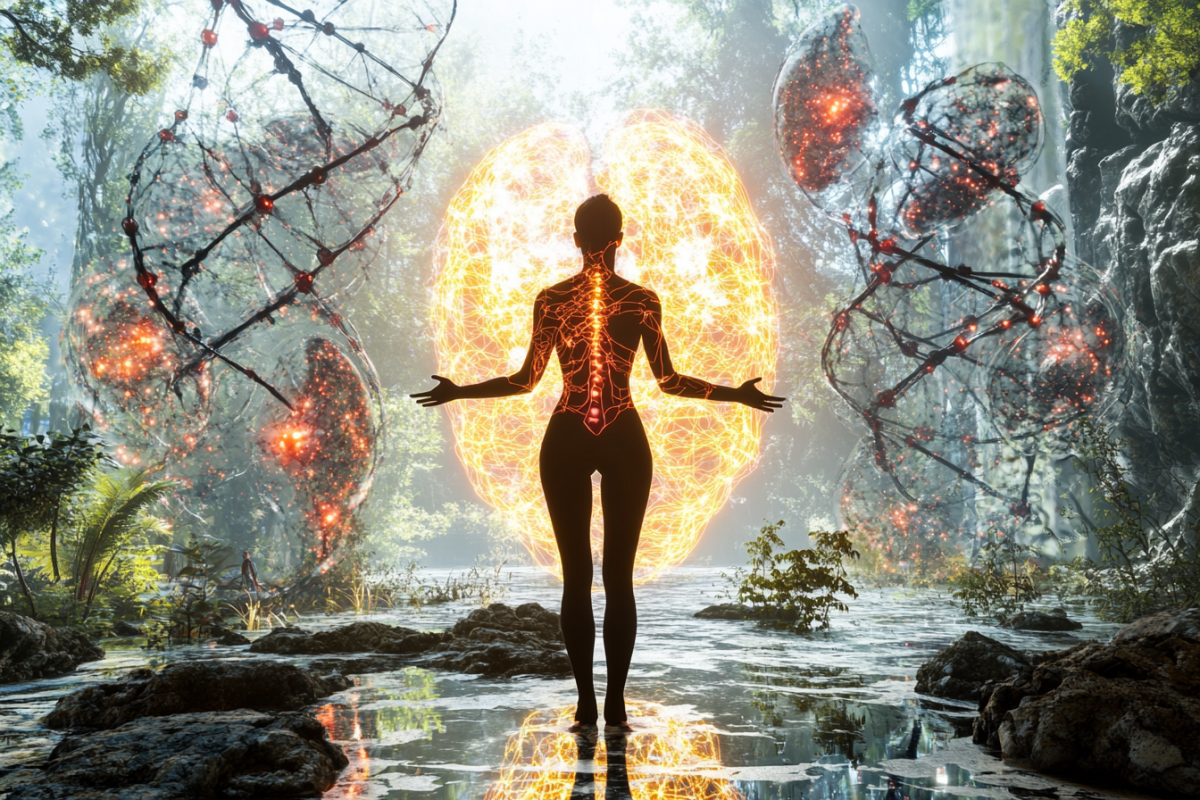
Human evolution is full of surprises, with strange and unexplained traits woven into our biology. Some of these adaptations defy logic, serving no clear purpose, while others seem almost supernatural in their efficiency. From mysterious survival abilities to genetic quirks that set certain people apart, science still struggles to fully explain how or why these odd traits exist. Are they remnants of an ancient past, the result of hidden evolutionary forces, or something else entirely?
Cold Resistance in the Wim Hof Phenomenon

Some individuals can endure extreme cold with almost no physical consequences, defying what we know about human biology. The most famous case is Wim Hof, who has climbed icy mountains in shorts and submerged himself in freezing water without hypothermia. Studies show his breathing techniques may alter his immune response and metabolism, but no one fully understands why his body can regulate heat so efficiently. Could this be an overlooked survival trait from our Ice Age ancestors?
The Superhuman Strength of Hysterical Strength

There are countless stories of ordinary people performing impossible feats of strength in life-or-death situations—lifting cars, bending metal, or breaking down doors with their bare hands. This phenomenon, known as hysterical strength, suggests that the human body may have hidden muscular potential beyond our normal limits. Scientists believe adrenaline plays a role, but why we can’t access this strength at will remains a mystery. Is there an evolutionary reason why our full power is locked away?
The Unbreakable Bones of Some People

Some individuals have bones so strong they are nearly unbreakable, thanks to a rare genetic mutation in the LRP5 gene. This adaptation makes their skeletons incredibly dense and resistant to fractures, almost like a real-life version of Wolverine. Strangely, despite the benefits, this trait remains rare in human populations. Why hasn’t evolution favored unbreakable bones for survival?
The Mysterious Dive Reflex of the Human Body

When a human face is submerged in cold water, the body instinctively slows the heart rate, redirects blood to vital organs, and conserves oxygen—an ability known as the mammalian dive reflex. This adaptation is common in marine mammals, but why do humans have it when we are not naturally aquatic? Some researchers speculate that our ancestors may have spent more time in water than previously believed. Could we have evolved for an aquatic past we no longer remember?
The Rare But Real Ability to See More Colors

Most humans have three types of color receptors in their eyes, but some—mainly women—possess a fourth receptor, allowing them to see millions of colors invisible to the average person. This condition, known as tetrachromacy, remains largely unexplored, and scientists don’t fully understand why only certain individuals develop it. Was this adaptation once widespread, or is it a glimpse of how human vision could evolve in the future?
The Extreme Altitude Adaptation of Tibetan and Andean Peoples

Certain populations living in the Himalayas and Andes can thrive at altitudes where most people would struggle to breathe. Their bodies have adapted to use oxygen more efficiently, producing fewer red blood cells to avoid altitude sickness. This adaptation is so unique that it developed separately in different parts of the world, yet scientists still debate exactly how it works. Did evolution shape these abilities over thousands of years, or is there another factor at play?
The Bizarre Condition of Natural Immunity to Pain

A rare group of people have a genetic mutation that makes them nearly immune to pain. They can suffer burns, broken bones, or major injuries without feeling anything, thanks to a malfunction in their pain receptors. While this may seem like an advantage, it also makes injuries more dangerous because pain is the body’s warning system. Why would evolution allow such a dangerous trait to persist?
The Unexplained Healing Power of Some People

Some individuals heal at a remarkably fast rate, recovering from injuries, surgeries, or illnesses in a fraction of the expected time. Scientists have found genetic markers linked to rapid cell regeneration, but the mechanism is still not fully understood. Could this be an ancient human trait that faded in most of us, or a hint at future human evolution?
The Ability to Withstand Extreme Heat

While most people overheat quickly, some cultures, like the Australian Aboriginals and the Bedouins, have developed an uncanny ability to endure scorching temperatures. Their bodies sweat differently and maintain hydration in ways that defy conventional human thermoregulation. How did this adaptation evolve, and could it become more widespread as global temperatures rise?
The Strange Sensory Power of Synesthesia

Some people experience a strange neurological phenomenon where their senses blend together—tasting colors, hearing shapes, or seeing music as flashes of light. This condition, known as synesthesia, remains largely unexplained, yet it seems to enhance memory and creativity in those who have it. Could this be a glimpse into a hidden layer of human perception?
The Mysterious Case of People Who Need Almost No Sleep

A rare genetic mutation allows certain people to function on just a few hours of sleep without negative effects. While sleep deprivation weakens most humans, these individuals remain alert, healthy, and even show increased productivity. Scientists have only begun to explore how this adaptation works, and whether it represents an evolutionary advantage. Could these “sleepless” people be a preview of future human potential?
The Unexplained Sixth Sense of Some Humans

Some individuals report an uncanny ability to sense things before they happen—whether through subtle environmental cues or something science has yet to define. Studies suggest certain people may have an enhanced ability to detect electromagnetic fields or microexpressions in others. Is this a leftover survival trait from early human evolution, or a hint at abilities we don’t fully understand?
The Unusual Ability to Sense Earthquakes Before They Happen

Some people claim to experience strange sensations—dizziness, pressure changes, or an eerie sense of unease—just before an earthquake strikes. While animals are known to exhibit unusual behavior before seismic activity, there is growing evidence that certain humans might also have a heightened sensitivity to ground vibrations or atmospheric changes. Scientists have yet to explain how this works, but if true, it could mean some individuals possess a built-in early warning system. Is this an overlooked evolutionary trait, or an unexplored connection between humans and the natural world?
What Else Lies Beneath the Surface?

The human body is full of secrets, some of which seem to belong in science fiction rather than reality. If evolution has already given us abilities that defy logic, what other adaptations could be waiting to emerge? Are these quirks of nature, or evidence of something more mysterious shaping humanity? Perhaps the greatest discovery still lies within ourselves.





